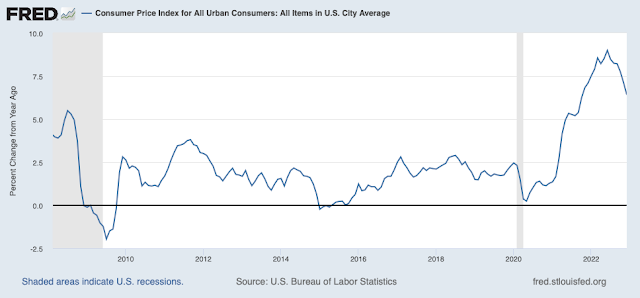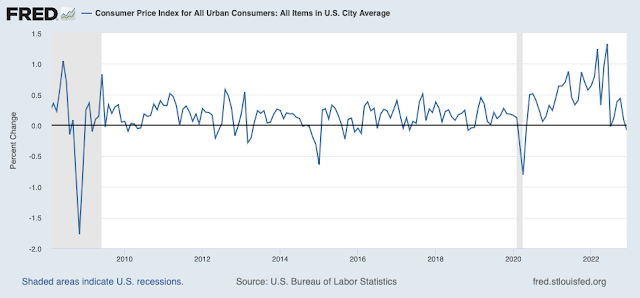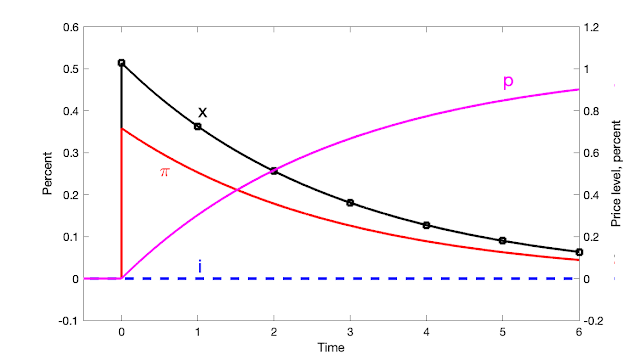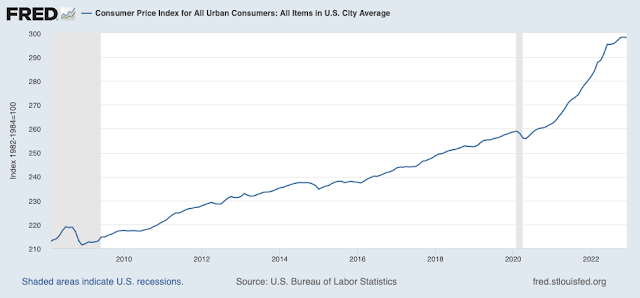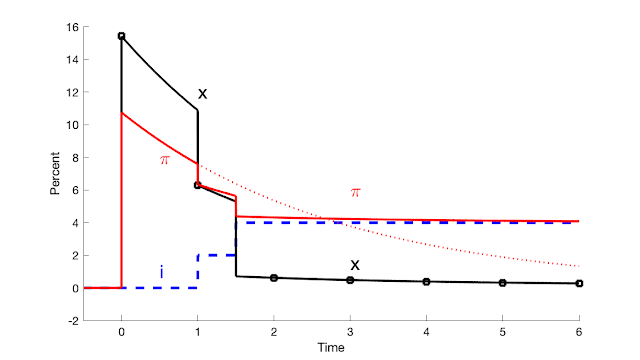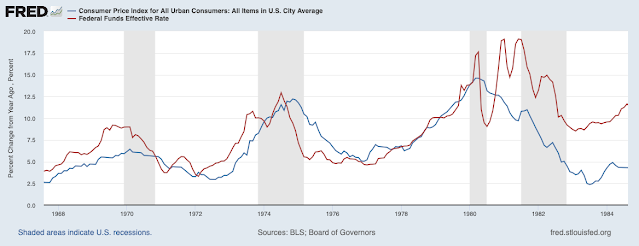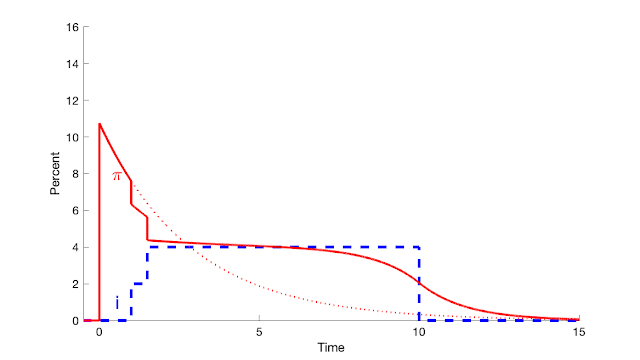Economics
Waning inflation, supply and demand.
Source here. Inflation seems to be waning. The conventional change from a year ago: The month to month changes now suddenly more popular on the way…
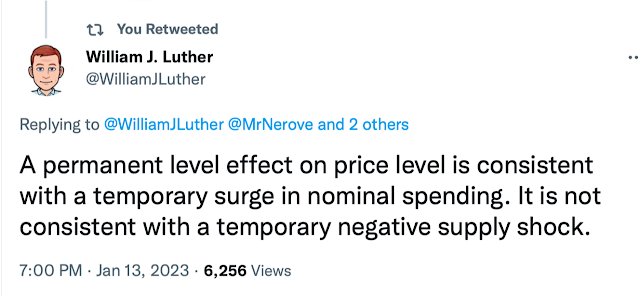
Source here.
Inflation seems to be waning. The conventional change from a year ago:
The month to month changes now suddenly more popular on the way down than it was on the way up:
The standard fiscal theory 101 says that a $5 trillion fiscal blowout will lead to an increase in the price level, to inflate away outstanding debt. But that inflation eventually goes away, even if the Fed does nothing. It goes away a little faster if the Fed raises rates. The central graph: here’s what happens in response to a big fiscal shock, if the Fed does nothing. Inflation rises but fades away as the new debt is inflated away.
So, while inflation was still increasing, starting here, last March, here at length for the Hoover monetary policy conference published as “inflation past present and future,” more distilled here with the first draft of “fiscal histories,” here with the clarity of continuous time models, here in the WSJ and here with pictures, here in the first draft of “expectations and the neutrality of interest rates,” I did go out on a limb with the view that inflation would abate, even without the Fed dramatically raising interest rates. Then, updated here as inflation did after all start to ease. (Hmm, I seem to be making the same point a few too many times!)
I call this the “second great experiment,” as conventional theory says the Fed needs to dramatically raise interest rates above current inflation to bring inflation down.
Now, to Luther’s point. Is this not a victory lap for “team transitory,” the view that inflation is just “supply shocks” that go away on their own?
No. A “supply shock” would raise prices temporarily, and then prices would fall back down to normal once the supply shock is over. A supply shock all on its own cannot permanently raise the price level. How is the price level doing?
The cumulative inflation has shifted up the price level by something like 10-20%, depending what you think about the earlier trend. The pure “supply shock” view says that we should now experience a symmetric period of deflation to bring the price level back to where it was, or at least to that plus a 2% trend. The fiscal theory or “demand” view says that this price level shock is permanent, or at least until something else comes along; a fiscal retrenchment would be necessary to lower the price level back to where it was.
Well, it hasn’t happened yet. The current end of inflation does not prove the “supply shock” view right. Perhaps it will. If we get a period of 10% deflation, just as unrelated to Fed action as the inflation was, then the supply shock view can take a turn of “we told you so.” Though, of course, nothing in economics is ever so simple.
What happens next? In the simple fiscal theory model, the Fed can lower inflation today, but only by making future inflation a bit worse. That is desirable too. For the recent Hoover economic policy roundtable, I made the following graph:
The beginning is the same as the last graph — the response to a 1% fiscal shock when the Fed does nothing. Now I ask, what if the Fed waits a year and then starts raising rates. You see in the short run the Fed does bring down inflation faster than it would otherwise go down. However, we have to inflate away debt at some point unless fiscal policy wakes up and decides to pay it back more aggressively. So we get more inflation in the long run. I call that “unpleasant interest rate arithmetic.”
inflation
deflation
monetary
policy
interest rates
fed
monetary policy

Argentina Is One of the Most Regulated Countries in the World
In the coming days and weeks, we can expect further, far‐reaching reform proposals that will go through the Argentine congress.
Crypto, Crude, & Crap Stocks Rally As Yield Curve Steepens, Rate-Cut Hopes Soar
Crypto, Crude, & Crap Stocks Rally As Yield Curve Steepens, Rate-Cut Hopes Soar
A weird week of macro data – strong jobless claims but…
Fed Pivot: A Blend of Confidence and Folly
Fed Pivot: Charting a New Course in Economic Strategy Dec 22, 2023 Introduction In the dynamic world of economics, the Federal Reserve, the central bank…

